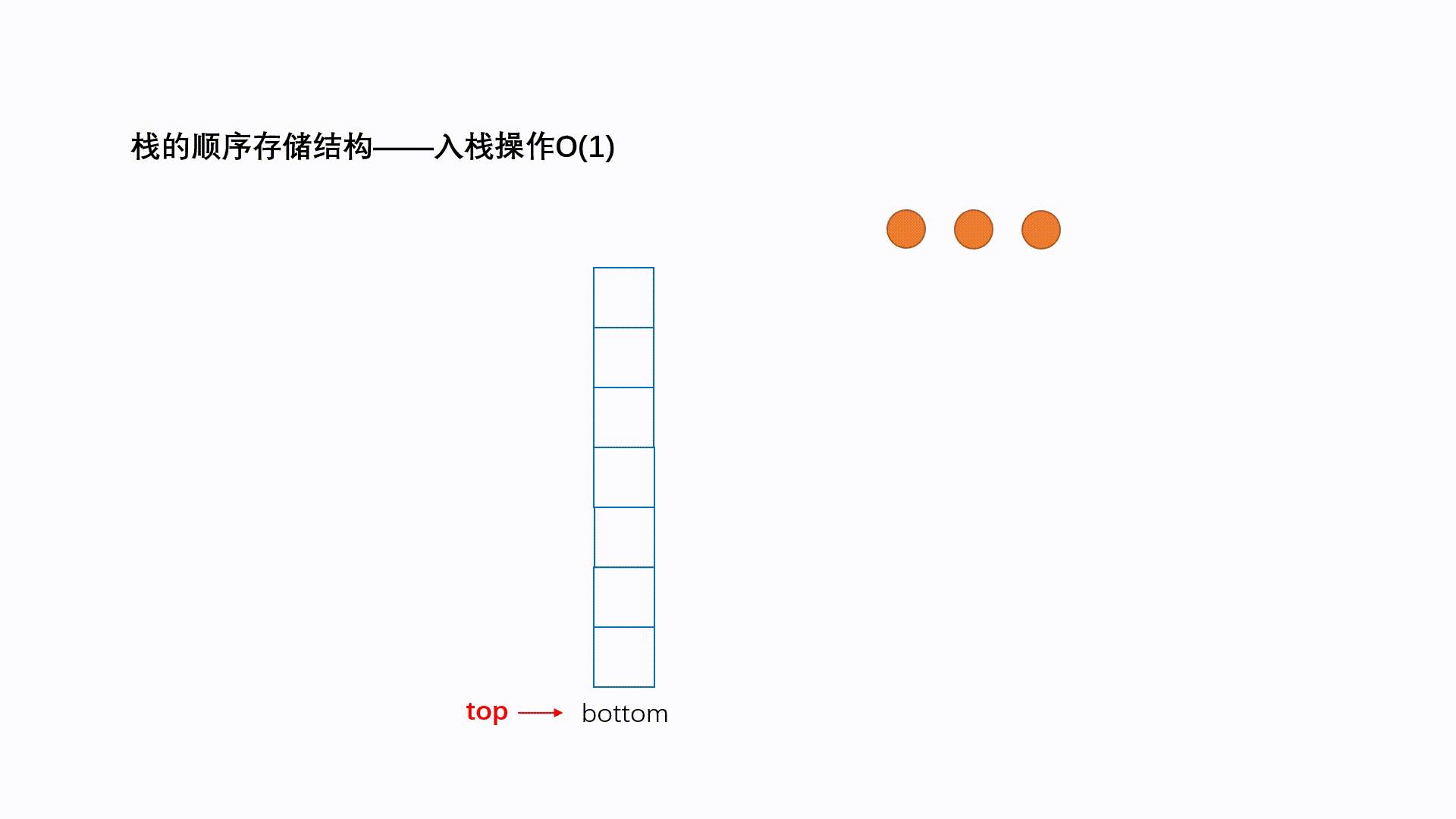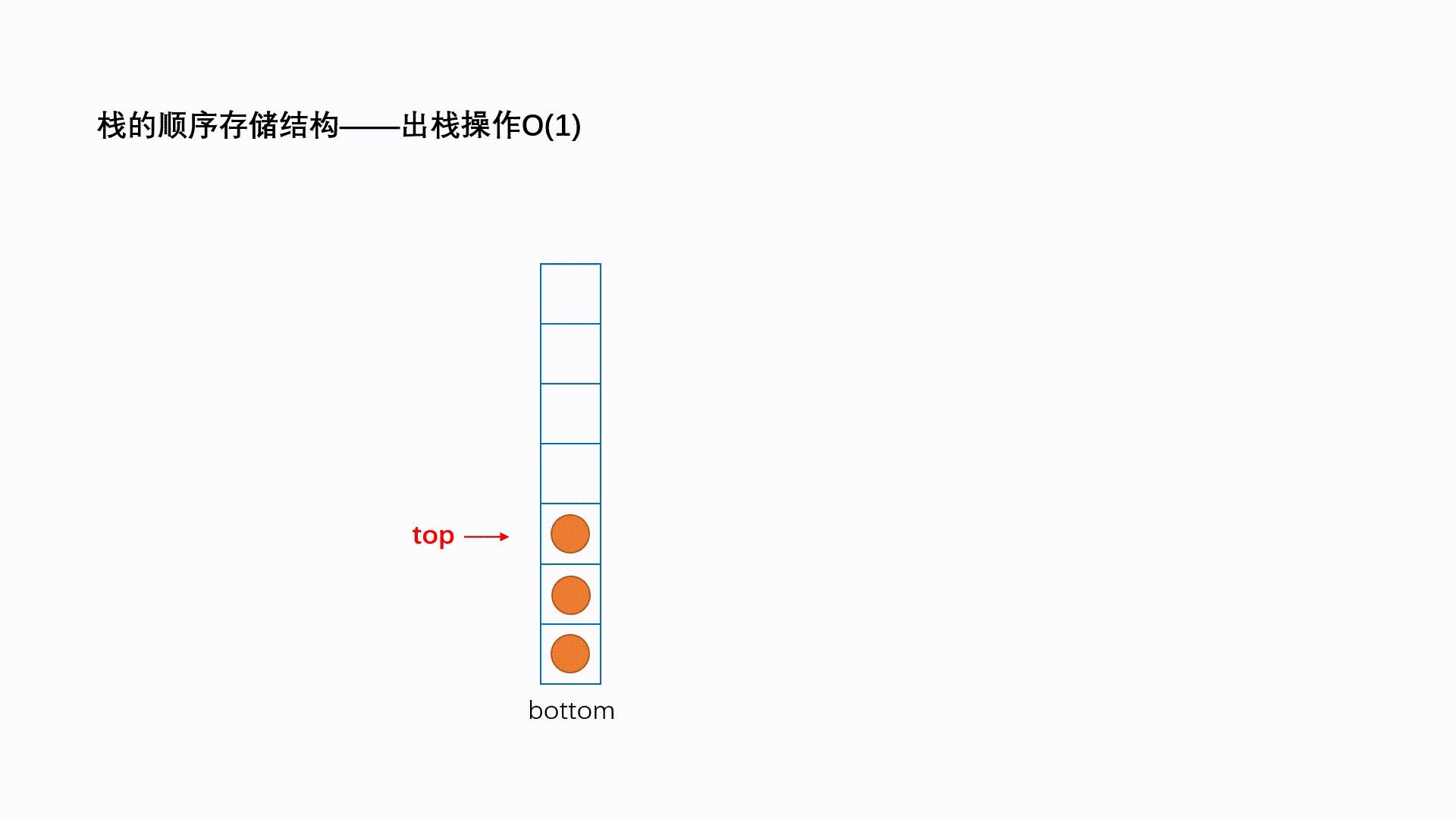跟着动画学 Go 数据结构之 Go 实现栈#私藏项目实操分享#
Posted 宇宙之一粟
tags:
篇首语:本文由小常识网(cha138.com)小编为大家整理,主要介绍了跟着动画学 Go 数据结构之 Go 实现栈#私藏项目实操分享#相关的知识,希望对你有一定的参考价值。
什么是栈

类似于链表,栈是一种简单的数据结构。在栈中,数据的取值顺序非常重要。
栈的生活例子
栈也有许多真实生活示例。考虑在食堂中彼此堆叠的板的简单示例。栈有点像洗碟子然后堆碟子,最先洗的一定是最上面的碟子,然后洗干净后,放到碟子的最下面。第一个放好的碟子永远是最后一个被取用的。可以简单地看到它遵循LIFO / FILO 原则。
栈的操作
栈是一种插入和删除总在一端的有序列表,最后插入的元素时总是第一个被删除的元素,这种特征也被称为 Last in First out(LIFO)或者 First in Last out(FILO)。
入栈的操作叫做 push ; 动画演示如下:

出栈的操作叫做 pop,动画演示如下:

往一个满栈里插入元素叫做 栈溢出;
栈的方法
push(e): Add e at the top of the (implicit) stack
pop(): Remove and return the top element of the stack
empty(): Return the Boolean value true just in case the stack is empty.
top(): Return the top element of that stack without removing it.
栈的结构
type Stack interface
containers.Container
Push(e interface)
Pop() (interface, error)
Top() (interface, error)
栈的数组实现
package main
import (
"errors"
"fmt"
)
// ArrayStack is an implementation of a stack.
type ArrayStack struct
elements []interface
// New creates a new array stack.
func New() *ArrayStack
return &ArrayStack
// Size returns the number of elements in the stack.
func (s *ArrayStack) Size() int
return len(s.elements)
// Empty returns true or false whether the stack has zero elements or not.
func (s *ArrayStack) Empty() bool
return len(s.elements) == 0
// Clear clears the stack.
func (s *ArrayStack) Clear()
s.elements = make([]interface, 0, 10)
// Push adds an element to the stack.
func (s *ArrayStack) Push(e interface)
s.elements = append(s.elements, e)
// Pop fetches the top element of the stack and removes it.
func (s *ArrayStack) Pop() (interface, error)
if s.Empty()
return nil, errors.New("Pop: the stack cannot be empty")
result := s.elements[len(s.elements)-1]
s.elements = s.elements[:len(s.elements)-1]
return result, nil
// Top returns the top of element from the stack, but does not remove it.
func (s *ArrayStack) Top() (interface, error)
if s.Empty()
return nil, errors.New("Top: stack cannot be empty")
return s.elements[len(s.elements)-1], nil
func main()
s := New()
s.Push(1)
s.Push(2)
s.Push(3)
fmt.Println(s)
fmt.Println(s.Pop())
fmt.Println(s)
fmt.Println(s.Top())
fmt.Println("栈的长度:", s.Size())
fmt.Println("栈是否为空:", s.Empty())
s.Clear()
if s.Empty()
fmt.Println("栈为空")
运行结果:
&[1 2 3]
3 <nil>
&[1 2]
2 <nil>
栈的长度: 2
栈是否为空: false
栈为空
栈的链表实现
package linkedliststack
import "errors"
type LinkedStack struct
topPtr *node
count int
func (s *LinkedStack) Size() int
return s.count
func (s *LinkedStack) Empty() bool
return s.count == 0
func (s *LinkedStack) Clear()
跟着动画学Go数据结构之冒泡排序 #私藏项目实操分享#